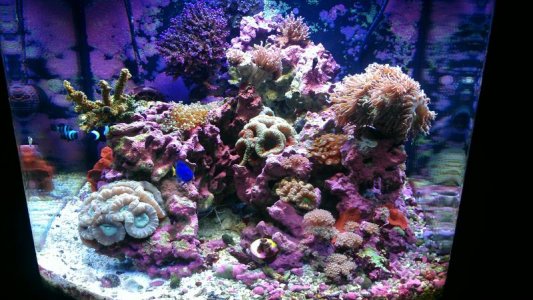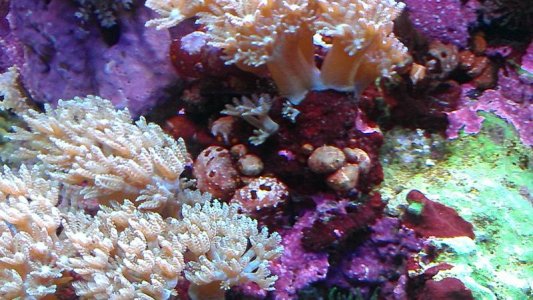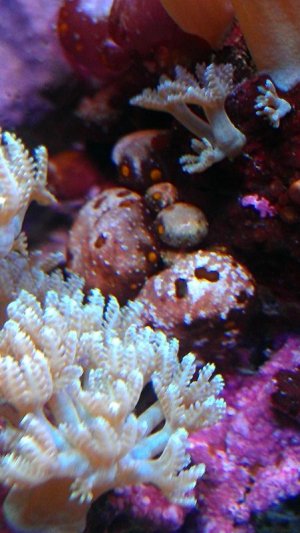thank you for posting, this tank is ideal for dosing because of the open spaces and lack of dsb...there isnt a lot of places for the offending biomass to hide after its eradicated
now the big big question
even though your rock is locked together, if it can be simply lifted out for a brief external treatment you are in the house regarding kill time and safety
and I don't blame you guys for wanting reassurance, when you have a tank that old you don't want anything messing it up.
an in tank treatment will work too, but they pale in comparison to just a single external treatment so ideally thats what I hope you can do
if possible, the undisputed ideal treatment for the rock structure is to simply lift it out and set it on a towel next to the tank.
use a spray bottle rinsed really clean and then filled with a new bottle of 3% peroxide, not a previously opened bottle. sometimes they are too weak. you can use a paintbrush to brush it on, the contact matters not the application method. some might just pour it across the targets. either way the brief exposure time outside the tank is simply too short, and 3% is too weak, to alter your biological filtration.
none of your fish are peroxide sensitive. but by breaking the treatment up into two rather than one big one you have an additional safe zone for the old clowns
spray half the rock, let sit outside the tank for 3-4 mins, this air exposure won't hurt that rhodactis anemone I think I see on the bottom parts nor any bacteria.
doing half is a nice conservative approach, plus you can compare the kill zone to the untreated side for some nice pics on the update lol
a few pumps of misted peroxide is easy to rinse off before placing back in.... just set back in tank, its only a few pumps, a few ml's worth. do the other half next week, rock fully clean, and will continue its duties only better looking
the skimmer will perk up during this time as its taking out the dieoff.
this treatment is ideal for your tank because it kills the regenerative parts of the invader but it can take more than one treatment if the rock was really allowed to set in with it. you will love the quick results.
if the rock can't be removed (even though thats the #1 way) then for an in tank treatment I would use no more than 3mls of peroxide at a time, and I would wrap that rock with Saran Wrap and wet arms lol with the pumps off, then inject the peroxide into the tarp, let sit in a still tank for 10 mins, remove tarp and turn on pumps, do a good water change later.
you could wrap parts of the rock and break the treatment up over several days so its not all at once. the Saran Wrap simpy extends the contact time well enough to make a difference, and even though the full dose goes into the tank those fish aren't sensitive to that dose.
since an external treatment puts hardly anything into the tank nothing can beat the safety of that method, so its my go to prescription. And your tank is wide open spaces, I hope you'll consider manhandling that rock and lifting it out and then putting it back in 5 mins later, this is certainly the best way!
post update pics you are going to like this
B




















